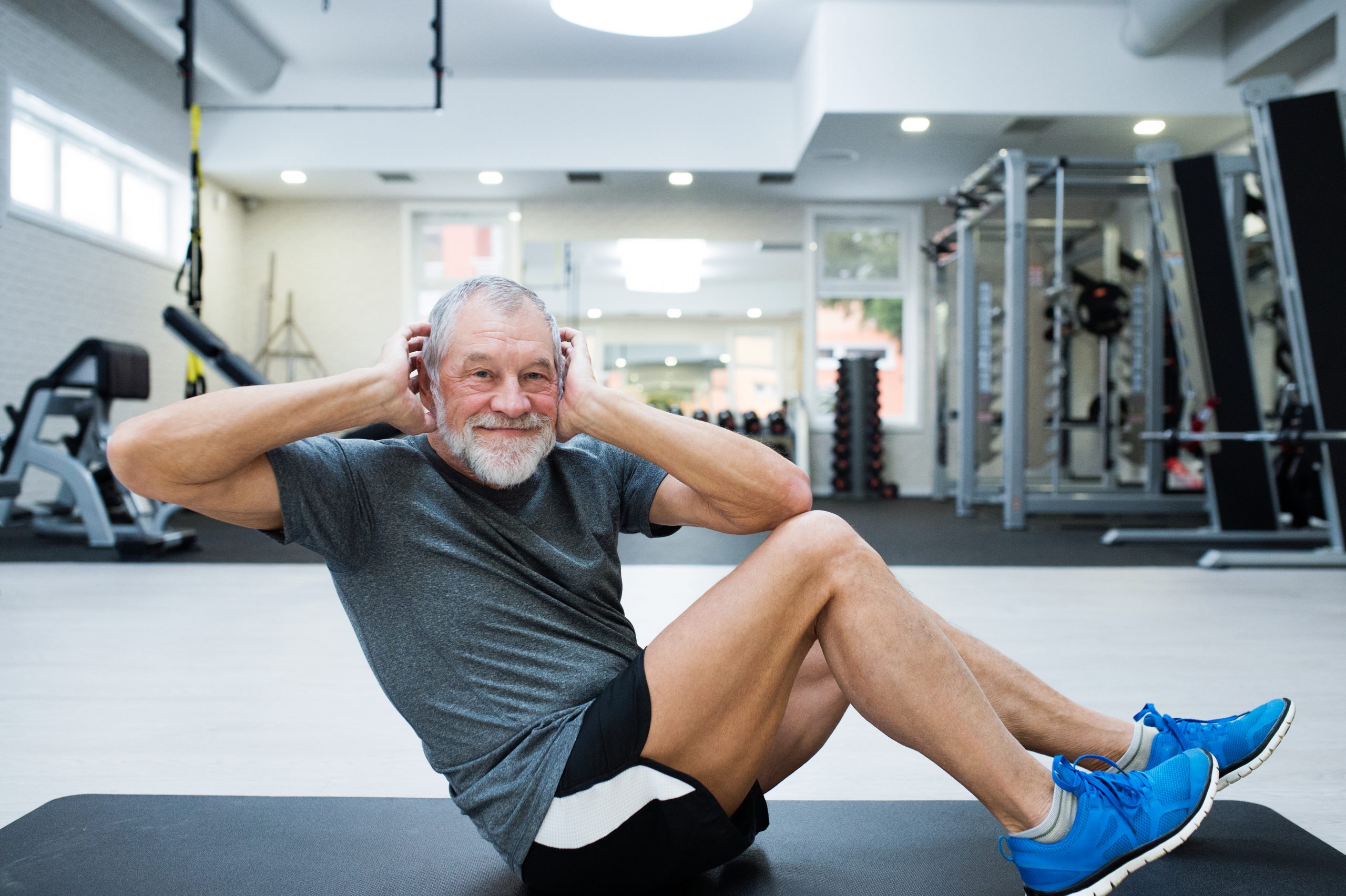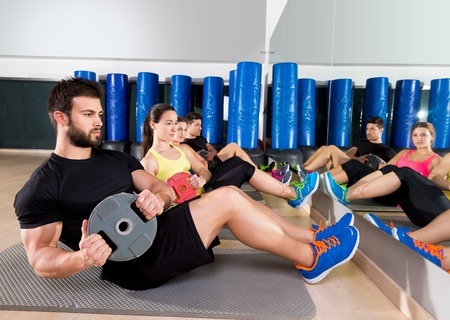
One of the many benefits of research is that we learn to fine-tune exercises so that they are not only effective but also safe. Unfortunately, many personal trainers may advise their clients to perform contraindicated exercises—those that may not be appropriate for a dysfunction or issue that particular client has, or are simply poor exercises for almost everybody (meaning, there are better choices to replicate the same challenge).
What Does Contraindicated Mean?
A contraindicated exercise is defined as “known to be risky.” It is deemed risky because it may weaken vertebral discs, ligaments, and tendons that may be damaged over time or injured at the time of performance. The most common area of the body that can take an unnecessary beating is the spine.
There are many exercises, especially for the abdominal and lower back muscles, that damage discs by increasing compression force on the spine at the time of the movement.
Imagine that each of your fists is a vertebra and that you put a sponge in between the fists and push your fists toward each other. The pressure that you exert on the disc (the sponge) is compression force which, when repeated, can lead to a cascade of events that results in intense pain.
If you do any of these “bad” exercises occasionally, little harm will come to your clients. However, the key here is that repetitive forces will wear down the supporting tissues and cause long-term damage.1
The following are what I would call the top ten contraindicated exercises and safe, effective modifications:
10. Donkey: On your hands and knees. Kick one leg out behind you while throwing the head up and back—both in a ballistic (sudden or bouncing) fashion.
Result: A lot of compression force on the cervical (neck) and lumbar (lower back) vertebrae.
Modification: Keep head stationary facing the floor, reach right arm forward and left leg back at the same time, then switch sides.
Strengthens: Lower back and glutes.
9. Bent over row or flyes without support: Standing, bent over about 45 degrees, holding dumbbells or barbell, and performing a row or reverse flye motion with the arms.
Result: A lot of compression force on the lumbar vertebrae.
Modification: If there are no lower back issues and good core strength, then a modified supported version is a good way to work up to an unsupported bent-over row or fly. Otherwise, use a bench for support for beginner clients. To exercise the right arm, put the left hand and left knee on a bench. Back should be flat and hand should be at the end of the bench. If there are concerns about low back issues or a weak core, then this can be performed with the bench set at a 30-degree incline and chest resting on the bench.
Strengthens: Mid- and upper-back and rear deltoids.
8. Cherry Pickers: Standing, feet apart, touch left foot with right hand and then touch right foot with left hand. Or, touch the ground between your feet several times, reaching back farther each time, before coming up. (Repetitive spinal flexion)
Result: A lot of compression force on the spine.
Modification: Allow the movement to take place in the hip and shoulder joints. Bend Forward from the hip maintaining a flat back, reach for the toe (if the toe can’t be reached, no biggie!)
Targets: Warm-up for hip hinging and shoulder joint.
7. Upright row: Standing, using dumbbells or barbell, elbows out, hands at the front of your thighs, pull bar up to chin, while elbows elevate to shoulder height.
Result: The head of the humerus is likely to become compressed in the joint or even hit the acromion process located superior to the humeral head. While someone with a perfectly healthy shoulder joint and adequate mobility and tissue health may perform this without incident, this is a very small segment of the population; our fitness clients would do better with a different selection.
Modification: An overhead press is usually appropriate for most people with apparently healthy shoulders. Should they have limited mobility, consider a landmine press.
Strengthens: Deltoids.
6. Squats with a butt-wink: Squatting while allowing spinal flexion to occur.
Result: Spinal shear and vertebral compression. Cue the client to maintain a flat spine while moving through the squat. If they cannot control the stability of the spine, then modify.
Alternative movement: Help clients kinesthetically improve hinging with a neutral spine by holding a light bar or broomstick against the back of the head and the sacrum, one hand holding behind the neck, the other holding at the low back. Have them practice hinging forward without the head or back losing contact with the broomstick.
Modification: Use a stability ball to guide the clients back into neutrality: Place the ball against the wall and ask the client to lean on the ball with the lumbar spine fitting against the ball, feet slightly ahead. Have them descend into a squat while conforming to the ball with the spine (it should remain in neutral lordosis not excessive lordosis).
Strengthens: Quads and gluteals
5. Neck rolls: Make circles with your head.
Result: A lot of compression force on the cervical vertebrae.
Modification: Turn your head to either side; in a separate movement tilt your head.
Stretches: Sides of the neck.
4. Back extension with arms and feet off of floor: On floor on tummy, lift feet and arms off the floor at the same time.
Result: A lot more compression force on the lumbar vertebrae than is necessary or appropriate for most people.
Modification: With forehead on the floor, arms reached forward and legs straight, lift right arm and left leg at the same time, then down, and then switch limbs.
Strengthens: Lower back.
3. Leg Raises: On back on floor with legs straight, lift both legs off the floor at the same time.
Result: A lot of compression force on the lumbar vertebrae.
Modification: Bend one knee and lift the other leg straight up to a 45-degree angle.
Strengthens: Hip flexors (Not abs!)
2. Inverted neck stand: (Admittedly, this isn’t one many of our clients are doing, but maybe in yoga class?) While supine, push body up in the air so that your feet are pointing toward the ceiling and your body is off the floor except upper chest, neck, and head. Some even fold legs over until the toes touch the floor
Result: Increased intrathoracic (chest) and cervical pressure.
Modification: None!
Strengthens: Nothing! (It is thought to improve spinal flexibility but few people would require such flexibility)

1. Sit-ups: This is self-explanatory, but is differentiated from a crunch, in that, the entire torso must leave the floor and then finish upright, sitting on butt. Add a twist? Now you’re really increasing the risk for injury.
Result: A lot of compression force on the lumbar vertebrae.
Modification: Roll up just far enough to lift head and upper back off the floor (so, a crunch).
Strengthens: Rectus abdominis
At the end of the day not everyone needs to avoid every single one of these contraindicated exercises, but certainly, a judicious personal trainer will asses and determine whether or not the benefit outweighs the risk when deciding.
References
- spinehealth.org/article/breaking-down-the-exercises-that-break-down-your-spine/
About the Author
Jeanne “Bean“ Murdock is the owner BeanFit, a health and fitness consulting company. She is the host/producer of Celiac Radio and the author of “Ask Bean“, an online column, and “Successful Dating at Last! A Workbook for Understanding Each Other“ and “The Every Excuse in the Book Book: How to Benefit from Exercising, by Overcoming Your Excuses”. Contact Jeanne for more information at 408-203-7643.






